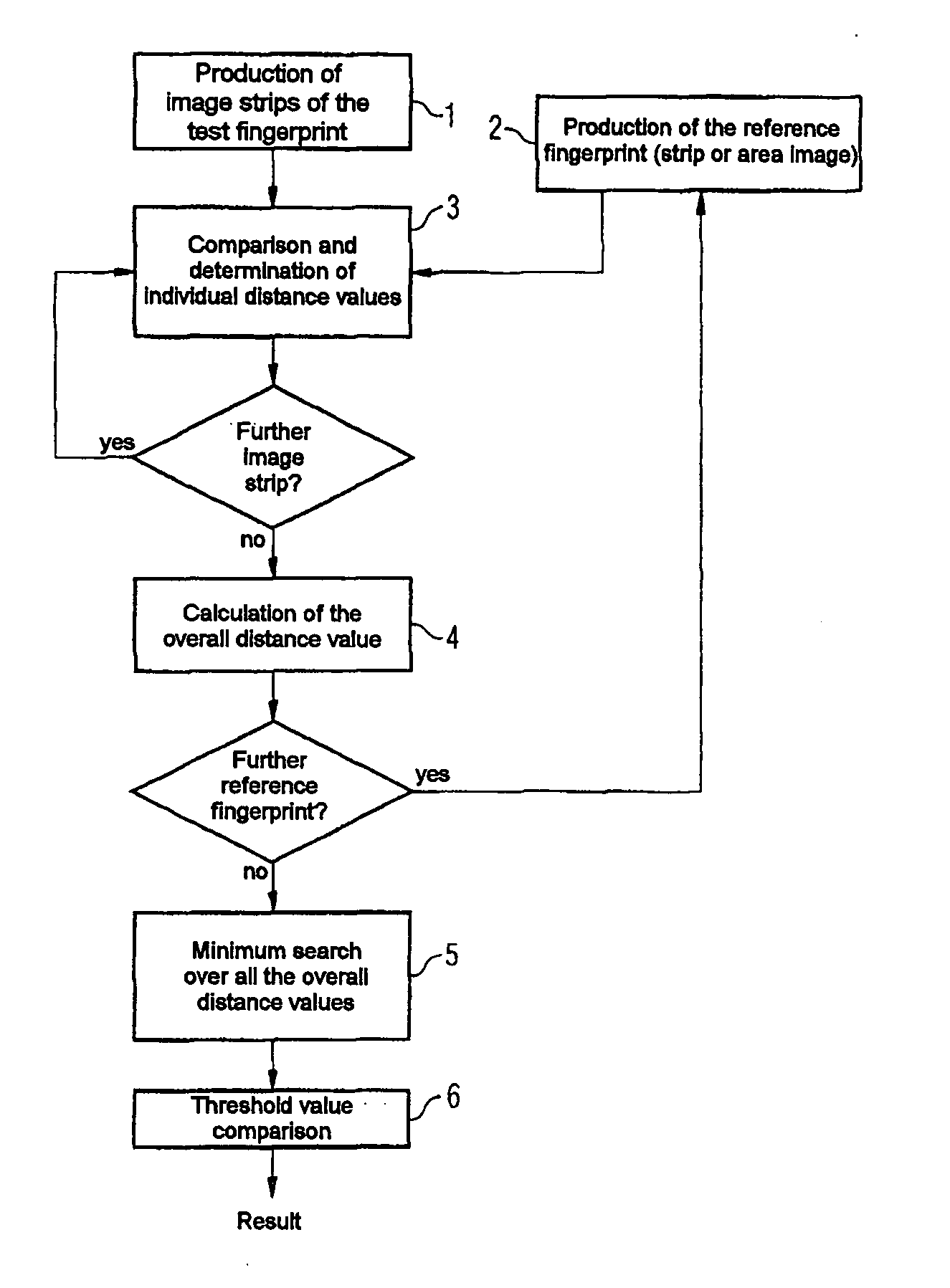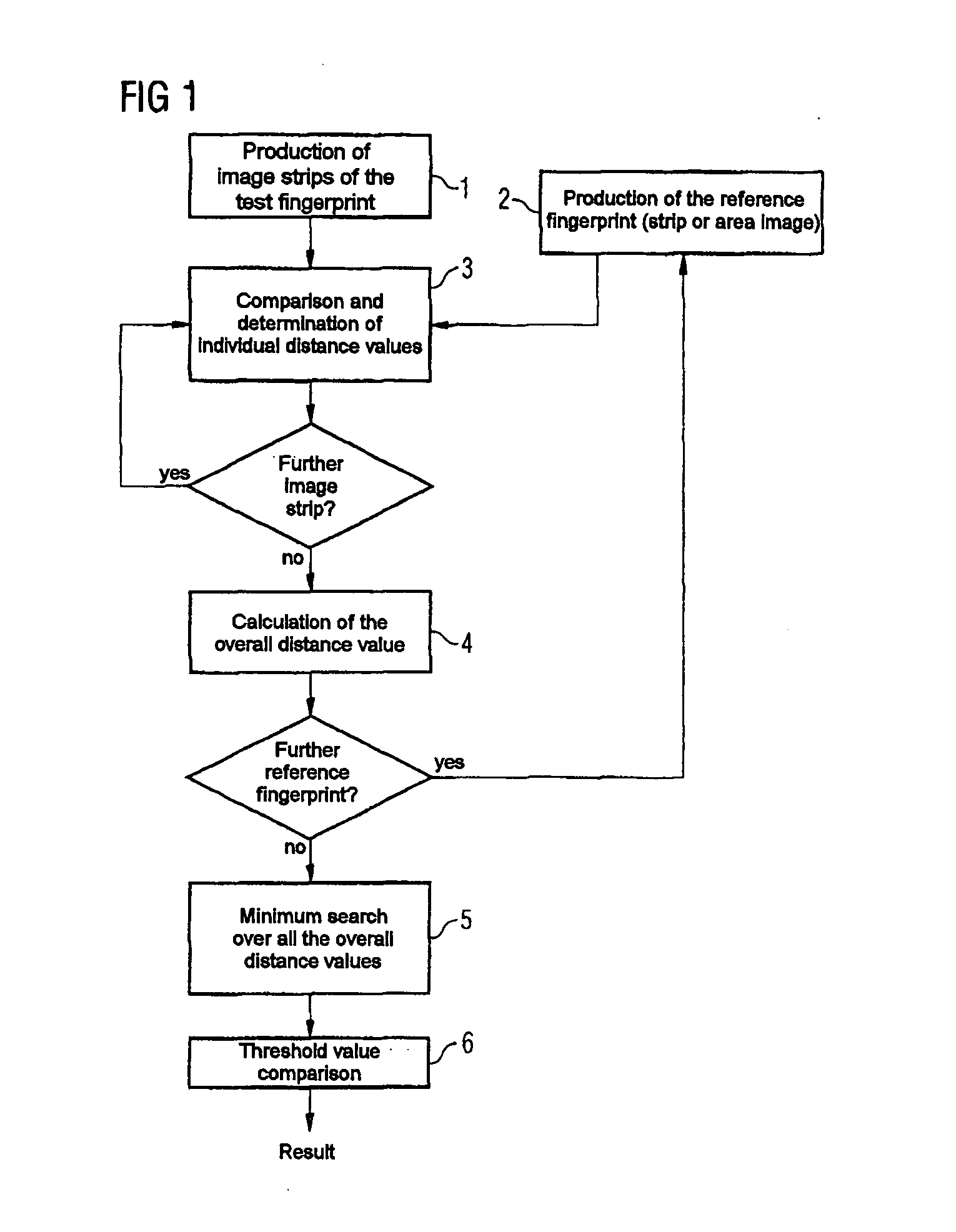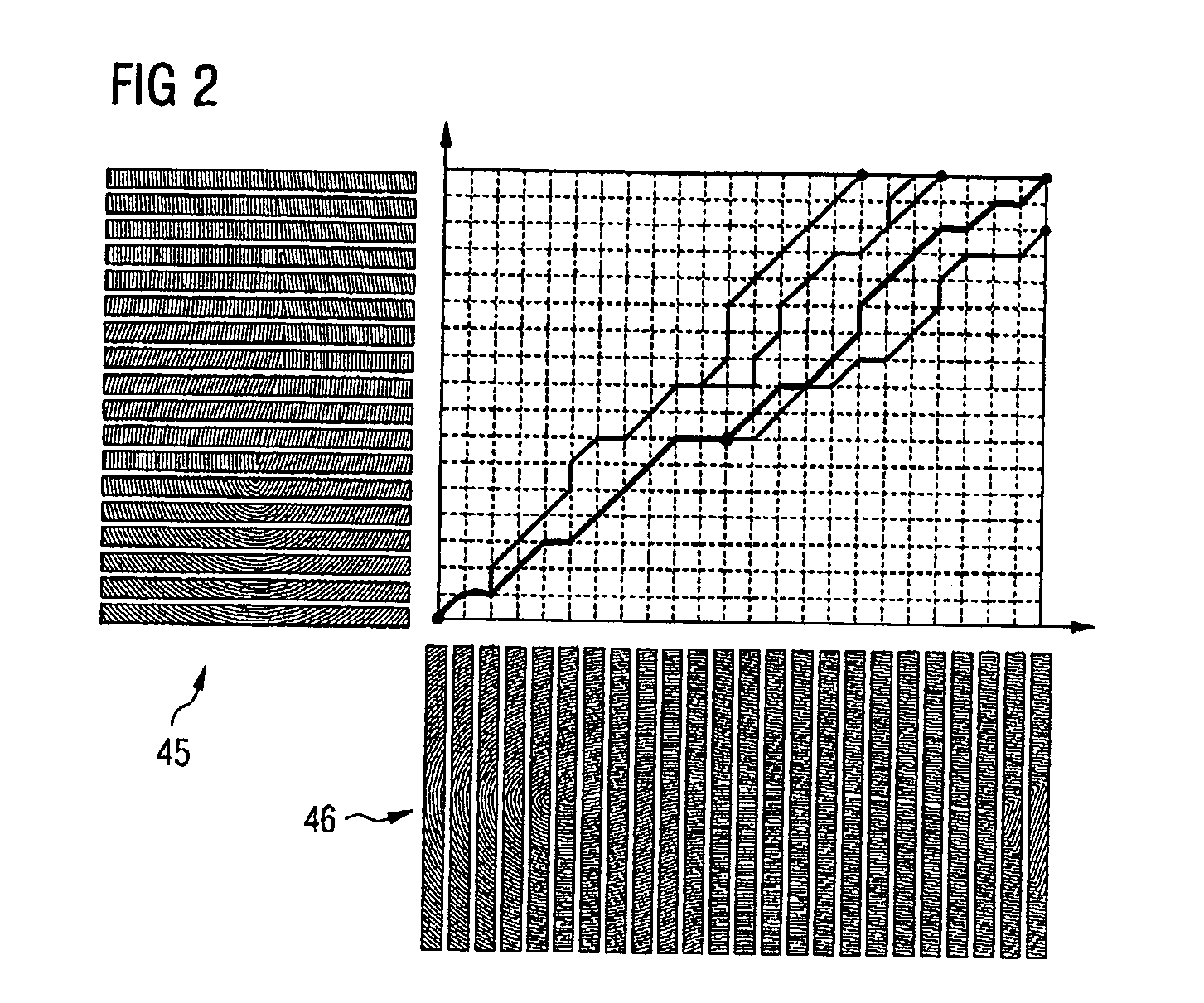Method for comparison of a test fingerprint, which is in the form of an image strip sequence, with a stored reference fingerprint, and a suitable apparatus for carrying out the method
- Summary
- Abstract
- Description
- Claims
- Application Information
AI Technical Summary
Benefits of technology
Problems solved by technology
Method used
Image
Examples
Embodiment Construction
[0027]FIG. 1 shows the procedure for a method according to the invention. Image strips of a test fingerprint are produced in a first step 1, preferably by means of a capacitive strip sensor, which records image sections of the finger in the form of strips while the finger is drawn over it. The invention is, however, not dependent on the sensor principle. Furthermore, a reference fingerprint is produced in a step 2, for example from a memory. The reference fingerprint may be in the form of image strips or an area image, in which case one image strip of the test fingerprint would in the latter case be compared with sections of the reference fingerprint, in order to carry out a comparison process.
[0028] Whether the reference fingerprint is stored in the form of a strip sequence or as an area image depends, for example, on the method for production of the fingerprint. If the reference fingerprint is likewise obtained by means of a strip sensor, which may also be identical to the strip ...
PUM
 Login to View More
Login to View More Abstract
Description
Claims
Application Information
 Login to View More
Login to View More - R&D
- Intellectual Property
- Life Sciences
- Materials
- Tech Scout
- Unparalleled Data Quality
- Higher Quality Content
- 60% Fewer Hallucinations
Browse by: Latest US Patents, China's latest patents, Technical Efficacy Thesaurus, Application Domain, Technology Topic, Popular Technical Reports.
© 2025 PatSnap. All rights reserved.Legal|Privacy policy|Modern Slavery Act Transparency Statement|Sitemap|About US| Contact US: help@patsnap.com



